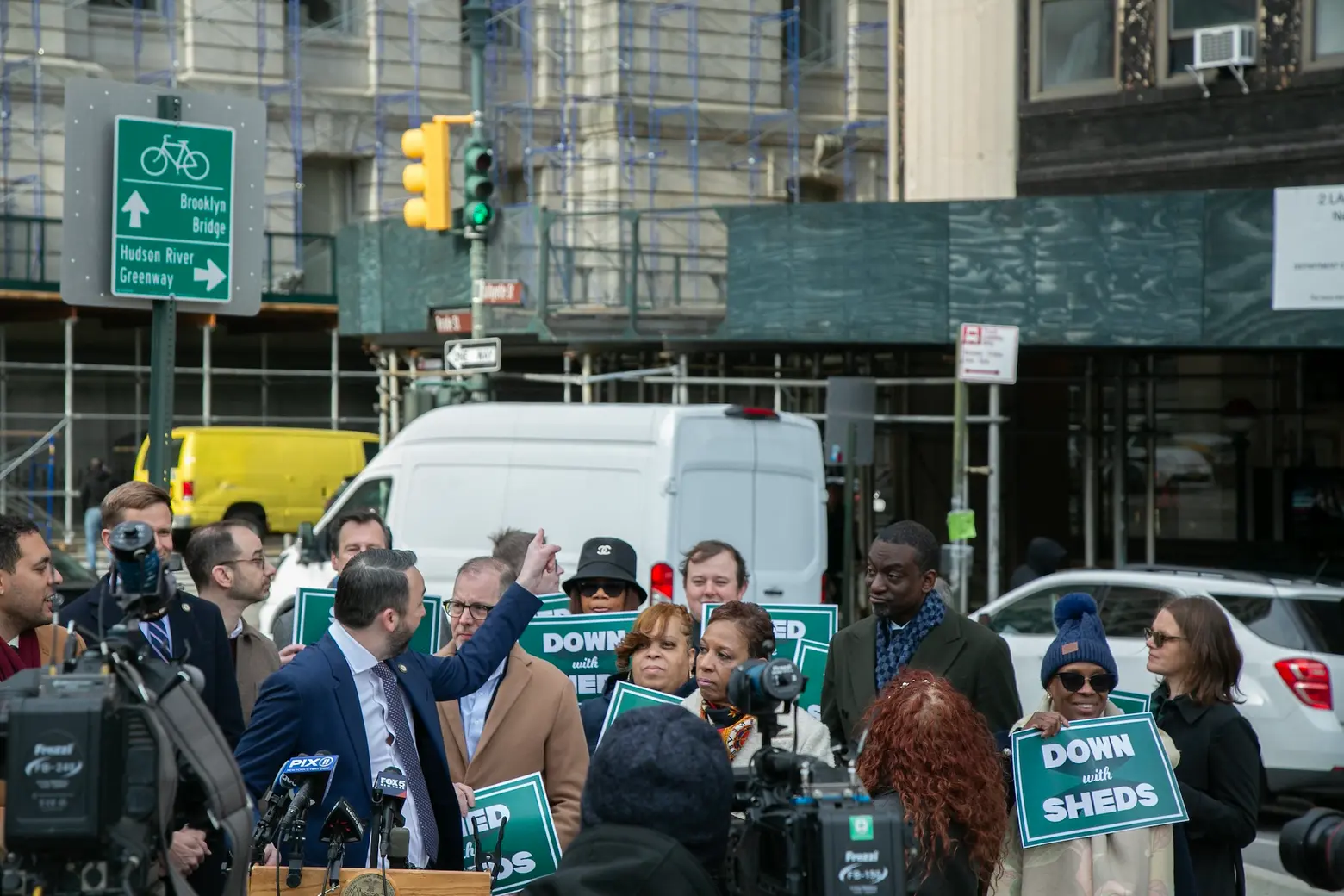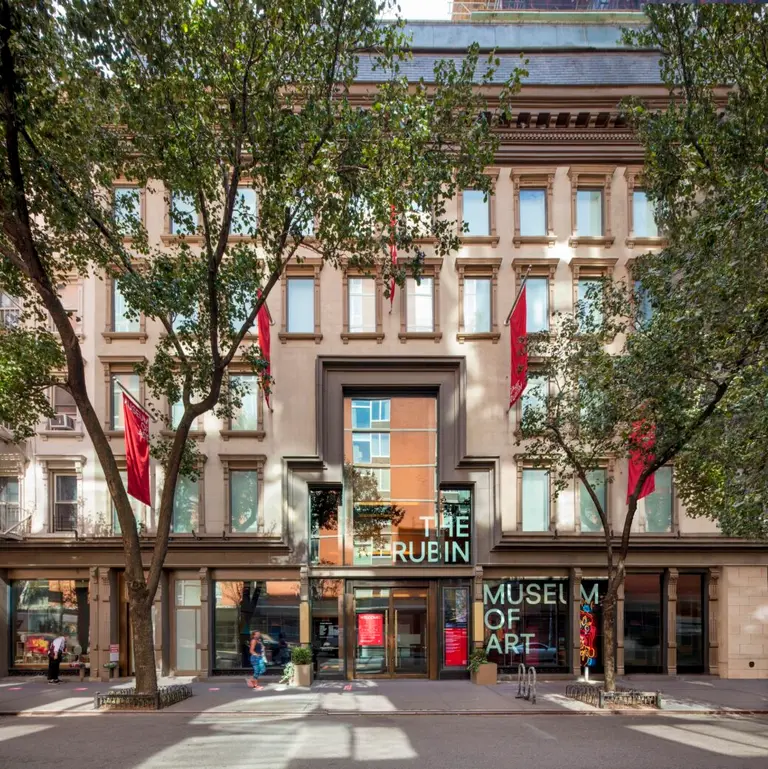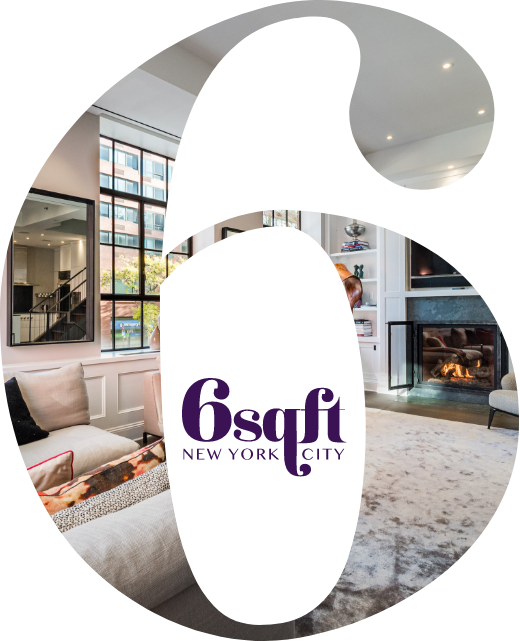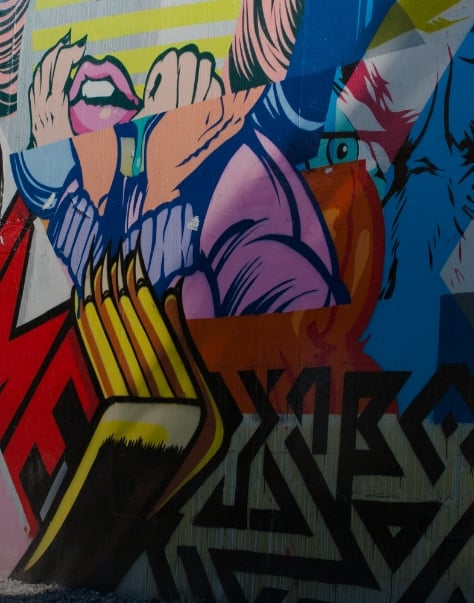Council passes legislation to reduce NYC’s 400 miles of scaffolding

Photo by William Alatriste/NYC Council Media Unit on Flickr
Scaffolding may soon have less of a ubiquitous presence in New York City. The City Council on Wednesday passed a series of bills reforming sidewalk shed rules to shorten how long the barriers can remain up and allow for new, more appealing designs. The city currently has over 8,400 sidewalk sheds that take up roughly 400 miles of sidewalk. On average, the structures remain in place for over 500 days; over 300 sheds have stood for over five years.
The five-bill package, sponsored by Council Members Keith Powers and Erik Bottcher, addresses New Yorkers’ frustration with the unsightly structures, which have also been shown to hurt business revenue, as 6sqft previously reported.
Existing laws surrounding sheds also incentivize property owners to keep them up for long periods instead of completing the facade work they were initially put up to protect. For a long time, property owners could delay building repairs as many times as they would like, keeping scaffolding in place for years without paying any fines.
“For too long, our city has been covered in over 400 miles of ugly, dingy scaffolding that impacts the experience of everyday New Yorkers, small business owners, and people coming to visit our city,” Powers said.
“It doesn’t have to be this way, and this package of legislation puts forward reforms to fundamentally change our approach to scaffolding while ensuring safety is still the top priority.”
The legislation requires the Department of Buildings (DOB) to study and recommend new shed designs to the City Council by September 30, 2025. Under the law, more color options for sheds would be allowed, construction fences would be required to match adjacent shed colors, lighting underneath would be increased, and the minimum height would be raised to 12 feet.
Another bill would shorten the time for shed permits for facade repairs from one year to three months, except for demolitions, building alterations, or new construction. The legislation would also establish new penalties for property owners who delay repairs to sheds that occupy the public right-of-way. These penalties would be enforced starting with the second permit renewal, increasing based on the age and size of the shed.
The legislation would require DOB to review the frequency of the Facade Inspection and Safety Program (FISP) and recommend changes to the Council by December 31, 2025. It would also extend the time between inspections from every five years to every six to 12 years and delay the first required inspection of any new building from five to nine years.
Introduction 660-A doubles the required lighting beneath sheds and mandates using LED lights. It would also require lights within 20 feet of windows or glass doors to be adjustable or shielded to avoid disturbing nearby homes and businesses.
Intro 661-A would bolster enforcement of facade repairs by imposing penalties on property owners who fail to submit construction documents to the DOB within five months of completion, do not file proper permit applications within eight months, or fail to complete repairs within two years.
“Sidewalk sheds have been a pervasive problem in our city for far too long, covering our streetscape and negatively impacting public safety,” Council Speaker Adrienne Adams said.
“The Council is proud to advance these reform laws that will improve our residents’ quality of life, make our streets more vibrant, and hasten the removal of these blights from our neighborhoods.”
The legislation complements Mayor Eric Adams’ “Get Sheds Down” plan, a series of nine initiatives to accelerate construction and repairs so sidewalk sheds and construction fencing can be removed as fast as possible.
As of August 2024, the plan has removed 173 miles of existing sidewalk sheds, as well as the city’s longest-standing shed, which stood at 409 Edgecombe Avenue in Harlem for over 21 years.
The city has also introduced the City Canvas program to beautify existing sheds and make them less of an eyesore. The initiative enlists local artists who submit artwork that is then temporarily installed on protective structures to make them look more visually appealing.
In August, the city released a study in collaboration with Mastercard that found cardholders spend between $3,900 and $9,500 less every month at Manhattan businesses covered by scaffolding and sidewalk sheds. Restaurants and bars are impacted the most, with a 3.5 to 9.7 percent decrease in weekly transactions during the six months following the creation of sidewalk sheds.
RELATED:





























